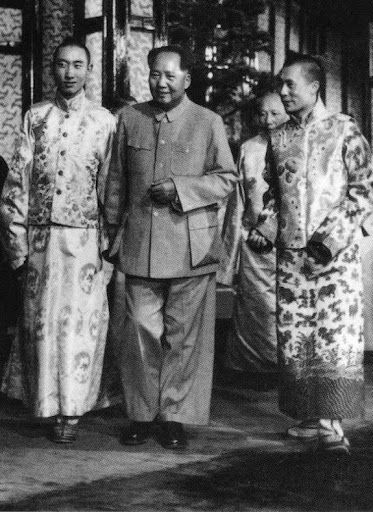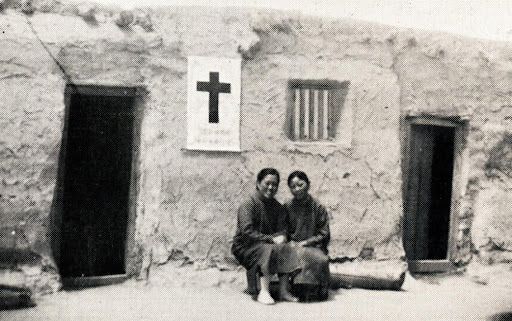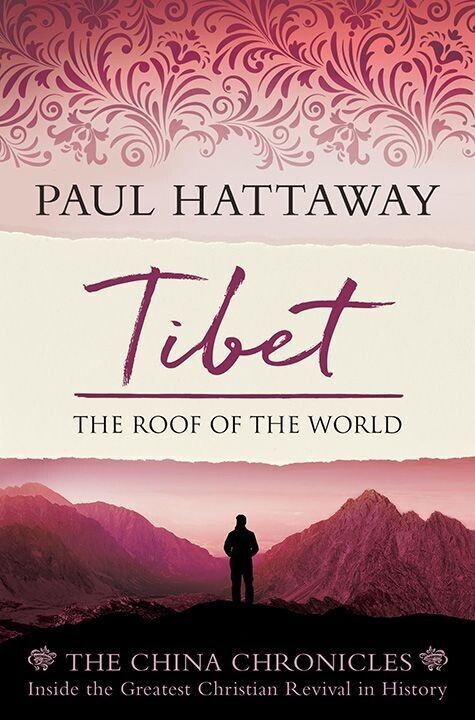1950s
Amdo ཨ་མདོ་
Massive loss of life was also experienced in the Amdo region, as the Communist "liberation" machine marched through the grasslands and valleys, slaughtering entire communities as they pleased. The Dalai Lama listed 49,049 deaths from battles within Amdo territory, in addition to 121,982 deaths from starvation.
After all foreign missionaries had been systematically expelled from China, some Han Chinese believers courageously volunteered to take their place. In 1950, a seminary graduate moved to Xining, hoping to carry on the decades of sterling service given by stalwarts of the gospel like French Ridley, Frank Learner and Victor Plymire. He made long journeys into the newly "liberated" Amdo areas, searching for any believers he could find. His report brought great encouragement to the expelled missionaries:
"In the country, village Christians are maintaining a testimony and strengthening one another's hands in the Lord. At one remote place I found four Christian farmers who had had no contact with other Christians for four or five years but, in spite of persecution, they still confessed the name of Christ. Thirty miles farther on, I found one isolated Christian continuing faithful in prayer and Bible reading.
Elsewhere I found the Christians meeting twice daily—in the morning for Bible study and in the evening for prayer, and tithing their money for the Lord's work. Not far away I was warmly received by a family of Tibetan Christians! At one Tibetan center, the little group of Christians had been revived and backsliders had been restored."
The Back to Jerusalem Tibet Mission
In the 1940s, a small number of Han Chinese missionaries received a call from God to labor in Tibet. Among them were some of the first workers with the Back to Jerusalem movement.
Li Jinquan was born into a Muslim home. Her parents died while she was young, and she went to live with her grandmother. When just 12-years-old, she ran away from home and fell into a life of sin, but when she heard the gospel for the first time at the age of 20, she believed and was saved.
In 1941, Li attended a Bible school and three years later she joined a short-term outreach to Gansu, where she met Tibetans for the first time. Li testified that "The Lord touched my heart to see the pitiful need of the Tibetan people.... The appeal constantly presented itself before me, and I could not but accept this challenge from God.... The Lord put the load of Tibet on my heart."
In March 1947 she joined other Back to Jerusalem missionaries and headed west, becoming part of the movement's Tibet mission. For years she lived in a small mud home in Tulan (now Ulan in Qinghai Province), where she preached the gospel and loved the Tibetan people, until she and the other Chinese missionaries were expelled from the area by the authorities.
Foreign missionary work among the Tibetans was brought to a close. The magazine China's Millions summarized the history of Evangelical work in the Amdo region with this somber analysis:
"There are perhaps 200 in the fellowship of the Church of Christ scattered throughout the eastern part of Qinghai, and though there have been a handful of conversions from Islam and Lamaistic Buddhism, there is no Muslim or Tibetan in the church today."
© This article is an extract from Paul Hattaway's book ‘Tibet: The Roof of the World’. You can order this or any of The China Chronicles books and e-books from our online bookstore.
1. China's Millions (January 1877), p. 5.
2. A. J. Broomhall, Hudson Taylor & China's Open Century: Book Six – Assault on the Nine (London: Overseas Missionary Fellowship, 1988), p. 148.
3. "Through Eastern Thibet," China's Millions (August 1879), p. 101.
4. My translation of the Jean-Baptiste Brieux Obituary in the Archives des Missions Etrangères de Paris, China Biographies and Obituaries, 1800-1899.
5. "What it Costs to Murder in Tibet," Chinese Recorder (August 1891), pp. 358-59.







